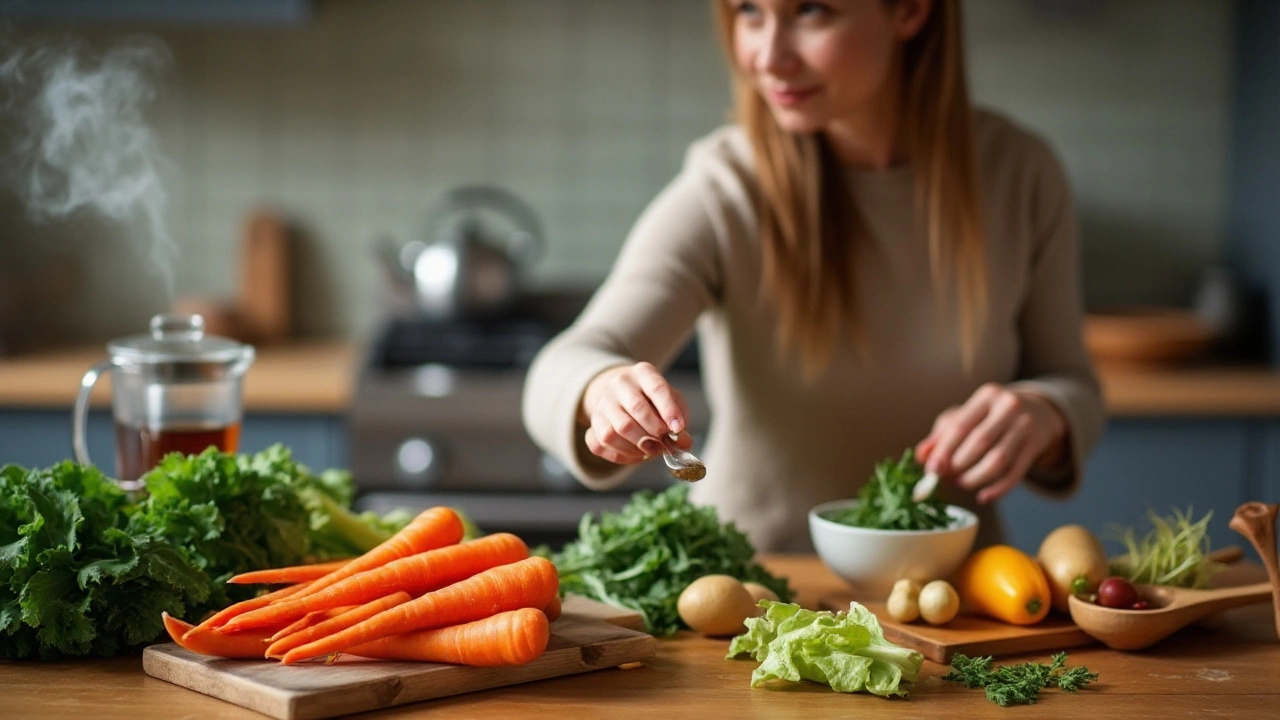Vegan Diet Made Simple: Tips, Recipes, and Facts
Thinking about going vegan or just want to add more plant‑based meals to your week? You’re not alone. More people are choosing a vegan diet for health, the planet, or animal welfare. The good news is you don’t have to give up flavor or convenience. Below you’ll find practical ideas that work for busy lives, plus the science that backs up common claims.
Everyday Vegan Meal Ideas
Start with what you already have in the pantry. A can of chickpeas, frozen veggies, and some spices can become a hearty stir‑fry in under 15 minutes. Toss the chickpeas with olive oil, paprika, and garlic powder, then heat them with broccoli, carrots, and bell pepper. Serve over brown rice or quinoa for a protein‑packed bowl.
If you love breakfast, try the oatmeal power bowl from our World’s No.1 Healthy Breakfast article. Swap dairy milk for almond or oat milk, add a handful of nuts, and top with fresh berries. It gives you fiber, healthy fats, and a dose of antioxidants to keep you full till lunch.
For a quick lunch, blend a can of black beans, a splash of lime juice, some cilantro, and a pinch of cumin. Spread the mash on whole‑grain toast, add avocado slices, and you’ve got a satisfying sandwich without any animal products. It’s easy, cheap, and perfect for a work break.
Dinner can be as simple as a one‑pot pasta. Cook whole‑wheat pasta, then stir in a jar of tomato‑free sauce like our Tomato Sauce Alternatives article. Add sautéed mushrooms, spinach, and a spoonful of nutritional yeast for a cheesy flavor without cheese.
Nutrients & Myths
One big myth is that vegans always look older or develop “vegan face.” Our How to Fix Vegan Face guide shows that the issue isn’t the diet itself, but missing nutrients like omega‑3s and vitamin B12. Adding ground flaxseed, chia seeds, or algae oil gives you those essential fats. A daily B12 supplement (or fortified foods) covers the vitamin gap.
Protein worries are also common. Legumes, tofu, tempeh, and seitan all contain enough protein when you eat a variety. A cup of cooked lentils provides about 18 grams of protein—enough for most adults in a single serving.
Iron absorption improves when you pair iron‑rich foods (like spinach or beans) with vitamin C sources such as orange slices or bell peppers. So a chickpea salad with chopped red pepper not only tastes good, it boosts iron uptake.Lastly, don’t forget calcium. Fortified plant milks, tofu set with calcium sulfate, and leafy greens like kale keep your bones strong. You don’t need dairy to meet daily calcium needs.
Ready to give vegan meals a try? Pick one of the ideas above, grab a few pantry staples, and see how easy it can be. You’ll save money, feel lighter, and maybe discover a new favorite dish. Keep experimenting, and remember that every plant‑based bite is a step toward a healthier you.
Understanding Weight Changes on a Vegan Diet
Switching to a vegan diet often raises questions about weight changes, leading to curiosity about whether adopting this lifestyle will lead to weight gain. This article delves into factors like calorie intake, food choices, and nutritional balance that influence weight on a vegan diet. It also provides insights into vegan nutrition, the impact of processed foods, and offers practical tips for maintaining a healthy weight while enjoying delicious plant-based meals. Readers will discover the importance of mindful eating and how to optimize their diet for health and weight management.
